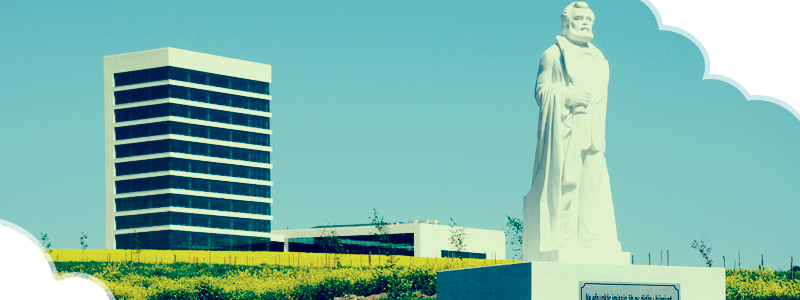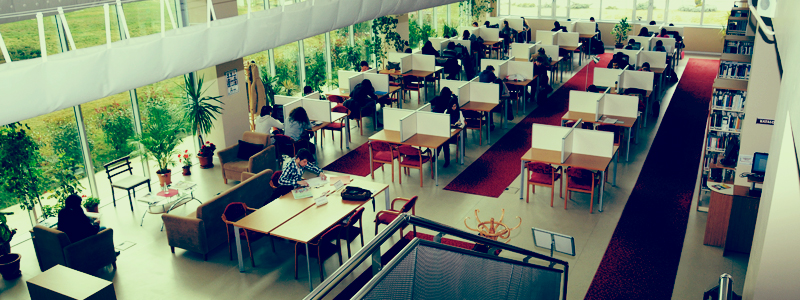| Exams, Assessment and Grading | Students will take a minimum of one midterm examination. In addition to midterms, they will be assigned projects and homeworks whose deadlines will be specified at the beginning of the semester. At the end of each semester, the students are required to take a final examination. The course content, the requirements (midterm, project, assignment and final examination) and their contribution to the final grade is specified on the website. Student regulations and the final examination dates are determined by the university and final examinations take place as announced. The students are graded according to their midterm, project, assignment and final examination results.
The passing grade at Namık Kemal University is 60 out of 100. However, the grade of the final examination or the retake should be a minimum of 50. Exams are evaluated on a scale of 100. The final grade of a course is the sum total of %30 of the midterm grade and %70 of the final or the retake examination grades. However, the calculation of the final grade of a course can be determined and announced as mentioned in the syllabus at the beginning of the semester by the Faculty/College Council as the sum total of ranging between %30 – %50 of the midterm examination and %50 – %70 of the final examination as long as the addition equals to a scale of 100. As a result of the calculation, if the value after the decimal is less than five, the grade is finalized by lowering it to the decimal value; if more than five, upgrading it to the next decimal value.
Final and retake grades are submitted to the Student Affairs along with the evaluation criteria. The grades are announced on the student information system.
Grades
The grading system to evaluate the student performance is signified by the values in the chart below. For each course students are graded by letters. Letter grades, coefficients and ratios are as follows:
|
Grade
|
Letter Grade
|
Coefficient
|
Status
|
|
90-100
|
AA
|
4.00
|
Pass
|
|
80-89
|
BA
|
3.50
|
Pass
|
|
70-79
|
BB
|
3.00
|
Pass
|
|
65-69
|
CB
|
2.50
|
Pass
|
|
60-64
|
CC
|
2.00
|
Pass
|
|
50-59
|
DD
|
1.50 |
Fail
|
|
30-49
|
FD
|
1.00
|
Fail
|
|
0-29
|
FF
|
0.00
|
Fail
|
Students are required to retake the courses from which they received DD, FD or FF during the first oncoming semester in which these courses are offered.
Successful Students
Students who complete their associate or undergraduate degree with a grade point average of 3.00 – 3.49 graduate as honor students; 3.50 and above as high honor students. |
| Teaching Methods | Teaching methods are determined so as to improve skills, such as teaching-learning strategies, self-discipline, life-long learning, observation, sharing knowledge, presentation, critical thinking, teamwork, effective use of informatics.
Moreover, the choice of teaching methods pays heed to supporting students with different skills. The teaching methods used in the program are listed below*:
|
TEACHING METHODS*
|
LEARNING ACTIVITIES
|
MEANS
|
|
Course
|
Listening and interpretation
|
Standard classroom technologies, multimedia devices, projector, computer, overhead projector
|
|
Discussion Course
|
Listening and interpretation, observation/situation handling, critical thinking, question development
|
Standard classroom technologies, multimedia devices, projector, computer, overhead projector
|
|
Special Support / Structural Examples
|
Special skills planned beforehand
|
|
|
Playing a Role / Drama
|
Special skills planned beforehand
|
Standard classroom technologies, special equipment
|
|
Problem Solving
|
Special skills planned beforehand
|
|
|
Case Study
|
Special skills planned beforehand
|
|
|
Brainstorming
|
Listening and interpretation, observation/situation handling, critical thinking, question development, team work
|
Standard classroom technologies, multimedia devices, projector, computer, overhead projector
|
|
Small Group Discussion
|
Listening and interpretation, observation/situation handling, critical thinking, question development
|
Standard classroom technologies, multimedia devices, projector, computer, overhead projector
|
|
Presentation
|
Listening and interpretation, observation/situation handling
|
Real or virtual environment suitable for observation
|
|
Simulation
|
Listening and interpretation, observation/situation handling, informatics skills
|
Real or virtual environment suitable for observation
|
|
Seminar
|
Research – lifelong learning, writing, reading, informatics, listening and interpretation, management skills
|
Standard classroom technologies, multimedia devices, projector, computer, overhead projector, special equipment
|
|
Group Study
|
Research – lifelong learning, writing, reading, informatics, critical thinking, question development, management skills, team work
|
|
|
Field / Land Study
|
Observation / situation handling, research – lifelong learning, writing, reading
|
|
|
Laboratory
|
Observation/situation handling, informatics, management skills, team work
|
Special equipment
|
|
Homework
|
Research – lifelong learning, writing, reading, Informatics
|
Internet database, library database, e-mail
|
|
Oral Exam
|
|
|
|
Survey and Questionnaire Study
|
Research – lifelong learning, writing, reading
|
|
|
Panel
|
Listening and interpretation, observation/situation handling
|
Standard classroom technologies, multimedia devices, projector, computer, overhead projector, special equipment
|
|
Guest Speaker
|
Listening and interpretation, observation/situation handling
|
Standard classroom technologies, multimedia devices, projector, computer, overhead projector, special equipment
|
|
Student Club Activity / Projects
|
Observation/situation handling, critical thinking, question development, team work, research – lifelong learning, writing, reading, management skills, special skills planned beforehand
|
|
*One or more of the listed methods can be used depending on the specificity of the course. |
Program Outcomes
1-To have knowledge and skills in a field that is based on the qualifications gained in general or vocational secondary education and supported by courses above the secondary education level and application tools and equipment, and to demonstrate that one understands the basic concepts in that field.
2-To demonstrate that one has gained the ability to identify problems related to unforeseen situations and seek solutions in studies in the field of Machine-Drawing Construction.
3-To demonstrate that one follows current developments and practices in the field of Mechanical-Drawing Construction and can learn independently and apply what one has learned.
4-To know about occupational safety, worker health, environmental protection knowledge and awareness, quality processes and sustainability in the field of Mechanical-Drawing Construction.
5-To have knowledge and awareness of social responsibility, ethical and cultural values, and social security rights on issues in the field of Machine-Drawing Construction, as well as to have awareness of career management and lifelong learning.
6-To be able to effectively define, collect, make and use mathematical calculations and basic static calculations necessary for the solution of well-defined problems in the field of Machine-Drawing Construction; To evaluate with an analytical and critical approach, to demonstrate that one can use the theoretical knowledge, manual and/or intellectual skills required in practical applications.
7-To be able to clearly explain designs, applications, production planning and manufacturing methods in the field of Mechanical-Drawing Construction to colleagues, superiors and the people and groups he serves, to solve encountered and unforeseen complex problems, to choose appropriate materials and to be able to work in a team.
8-To objectively evaluate and supervise the performance of employees under his/her responsibility.
9-With basic knowledge of computer usage, he plans the workflow by preparing 2-3D drawings for manufacturing and assembly in order to use the software and hardware required by his profession.
10-To have sufficient knowledge of a foreign language
|









